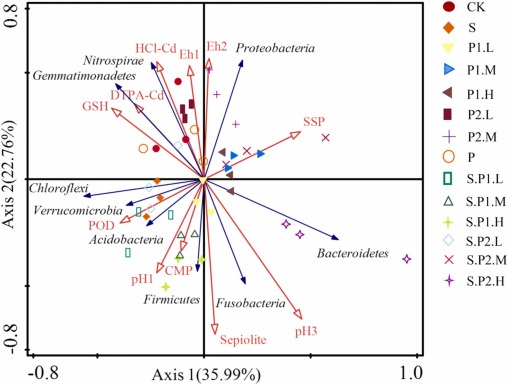
Recently, researchers in the Institute of Bast Fiber Crops, Chinese Academy of Agricultural Sciences had investigated the effects of two phosphate fertilizers on Cd mobility and the soil microbial community of Cd contaminated paddy soil remediation by sepiolite. The study aimed to support theoretical bases and practical guidelines for applying fertilizers in field-scale remediation. Moreover, the results will provide novel insight intoassessing the effects of fertilizer on soil heavy metal mobility during heavy metal-contaminated soil remediation by amendments. This article has been published online in the Ecotoxicology and Environmental Safety.

Graphical abstract
In-situ immobilization does not remove Cd from the contaminated soil. It is vital to investigate the effects of fertilizers on soil Cd mobility during remediation with amendments. Natural sepiolite was selected as the immobilization material, and two commonly used phosphate fertilizers, i.e., calcium magnesium phosphate (CMP) and calcium superphosphate (SSP), were chosen as representative phosphorus fertilizers. The results demonstrated that the Cd concentration of brown rice was decreased with sepiolite, CMP, andSSP. The application of CMP or SSP has no adverse effect on brown rice Cd concentration during heavy metal contaminated soil remediation by sepiolite. The SOD, POD, and CAT activities and MDA concentrations of rice root were decreased by different degrees with sepiolite, CMP, and SSP, indicating these exogenous additions alleviated rice root Cd's stress. Low Eh and high pH might be the main mechanism that decreased the soil available Cd with sepiolite and CMP. In addition, the soil bacterial richness and diversity were no significant adverse effects with sepiolite, CMP, and SSP addition.
The study was financially supported by the Program of Knowledge Innovation of the Chinese Academy of Agricultural Sciences (CAAS-CXGC-xym-2018); China Agricultural Research System (CARS-03); Bureau of Science and Information Technology of Guangzhou Municipality (201903010022); The R&D program of Guangdong Provincial Department of Science and Technology (2018B030324003).
The study can be accessed through the following link: https://doi.org/10.1016/j.ecoenv.2022.113388

